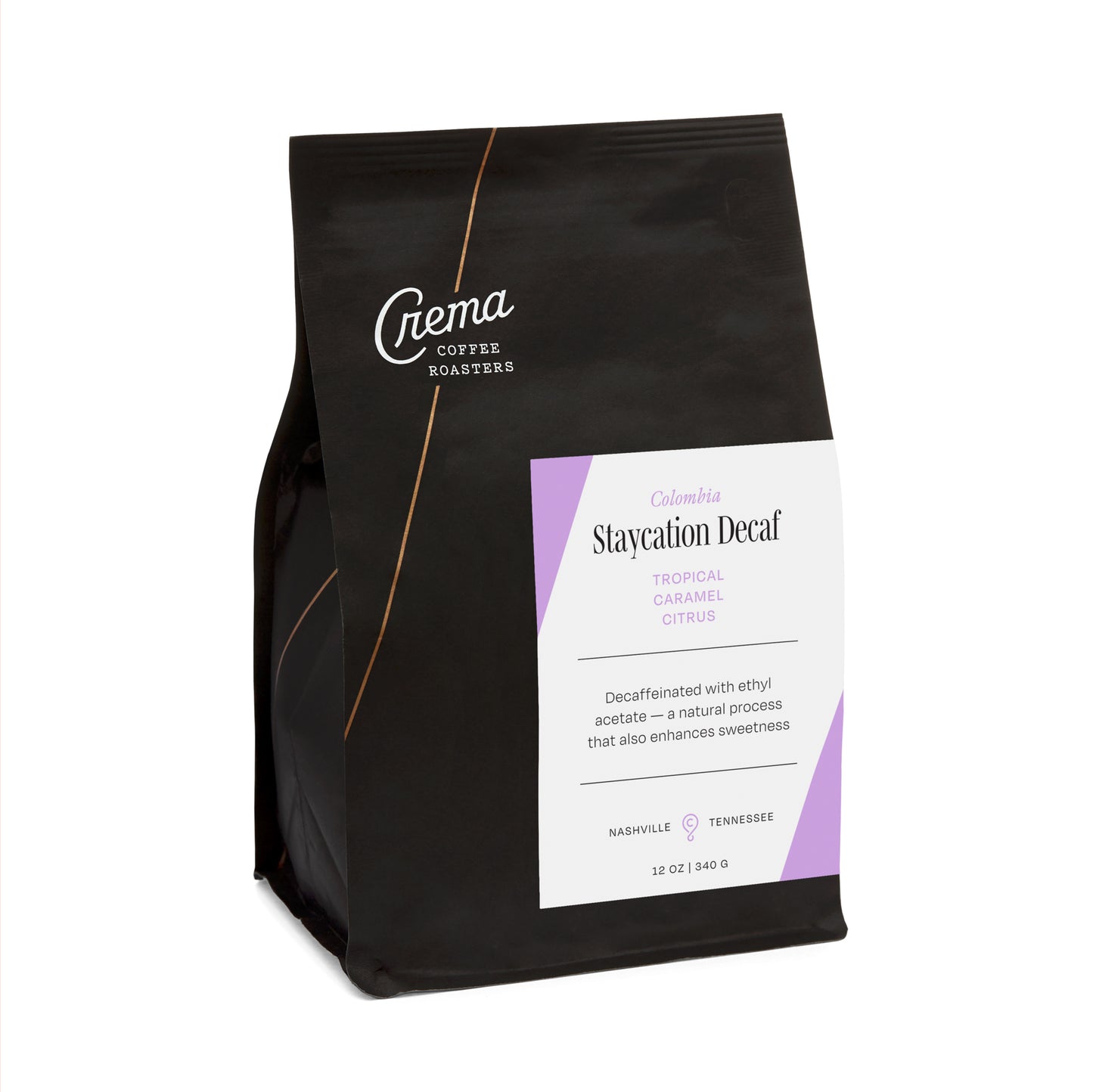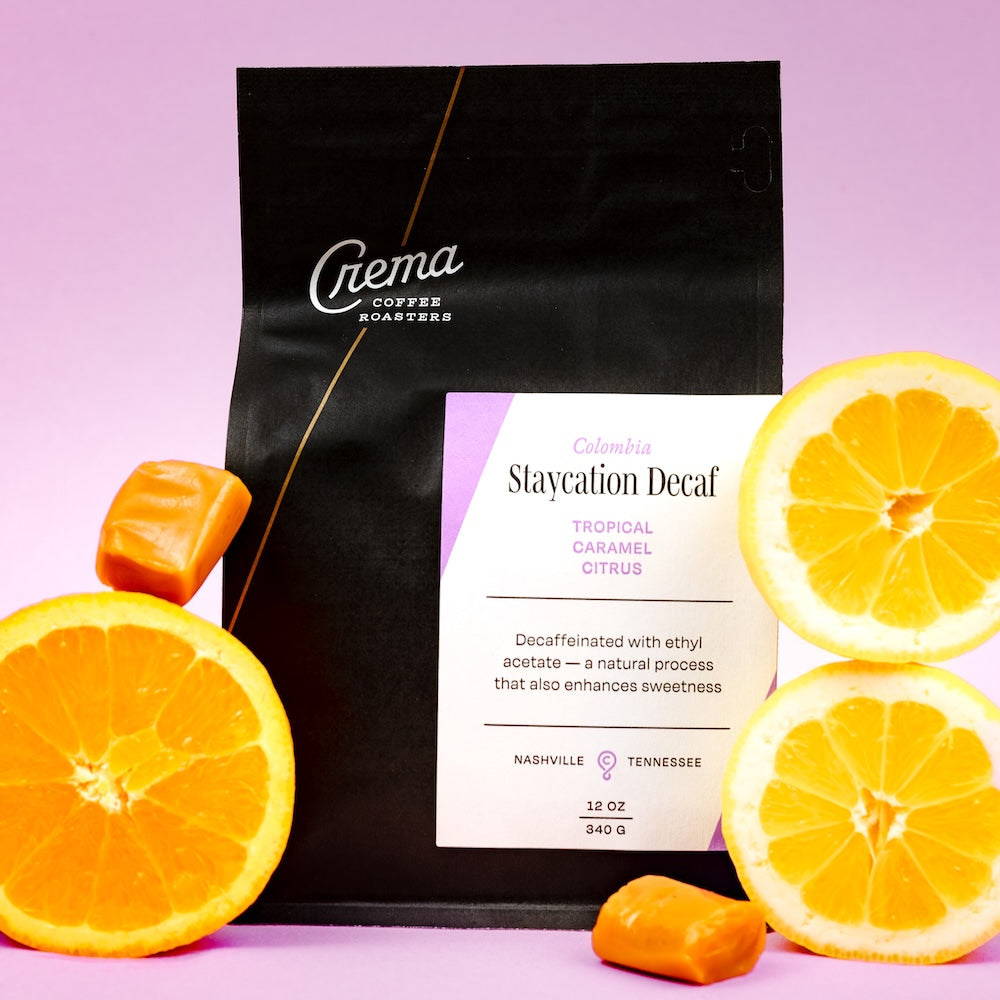We Crema folk spend a lot of time with the coffees in our shop. We get to know what each one looks like – the size, the color, the shape. We can distinguish many of them by sight. But this fruit that we take such pride in, that we feel we know so well, have a past life. Four consecutive years of travelling to origin, this time to Costa Rica and Panama, have shown us this. Varieties, strategically selected by the farmer to both grow well and be tasty, are planted and nurtured into bloom. They grow up in the rainforest and spend their earliest days basking in the Costa Rican sun and a flurry of Spanish, Cabécar, and Bribri. Each and every cherry is sought out by a discerning eye and plucked by practiced fingers. The pickers, sorters, and dryers - they know these same coffees, but in a different way.

On this ten-day trip we got to visit several good friends like Luis Monge and tour his farms - Finca Dragon and Finca Santa Rosa - be sure to keep an eye out for these beautiful coffees at CREMA this year. We’re also beyond excited to reprise the delicious, naturally processed El Pilon, farmed by Edgar Urena, who dried this coffee in raised African beds arranged around his own house. On the second half of our trip we had the pleasure of exploring the stunning land of the geisha, La Esmeralda in Panama, impeccably maintained by Rachel Peterson and family. And, of course, we are always inspired by our visits to Wilford’s farms at Elida Estate (also Panama), to which we’ll probably dedicate an entire blog post.

We often state that great coffee starts with great relationships, and that’s partly because this belief has helped us align ourselves with our farmers and create a dialogue about making our coffee better. If you’ve been following Crema’s origin trips on the blog, you may remember our visits to Exclusive Coffee, the organization that fosters nearly all of Costa Rica’s specialty coffee. So much of what we do when we visit Costa Rica is traced through Francisco at Exclusive and the game-changing work they do there. In the pre-Exclusive days, farmers would grow and then sell to the nearest co-op at the current market price, then their coffee would likely be mixed with others and sold to various buyers overseas. But around eight years ago Exclusive Coffees was founded to facilitate direct exchange between farmers and buyers, and now acts as a resource for small farmers who want bring lots in to get feedback, gain access to better equipment and fertilizers - whatever they need to improve their crop. It also grants farms the opportunity to personally represent their coffees, mill more efficiently, and pay closer attention to processing once the cherries are picked. Everything Exclusive does is an effort to improve quality. They even have their own dry mill on the premises. In their eight years of business they have grown from hosting about twelve mills to 150, so the minute we get there, we quickly clink our spoons together and get to cupping.

This is actually where we first tasted some of our favorite coffees like El Pilon, El Dragon, Santa Rosa and Bella Vista. It consequently connected us to the Bonilla family of Don Mayo Mill, (whom we visited again this year!) because when we taste a coffee we love, we do our darndest to visit the farm where it’s grown.


Hector Bonilla, with his startling, happy blue eyes, is always well-dressed and strutting in his signature fedora - the picture of a benevolent patriarch. He operates Don Mayo and its surrounding farms alongside his son, Pablo. These second and third generation coffee farmers led our group through grove after verdant grove, pointing out every tree, varietal, and critter, while Pablo explained that this year’s harvest was plentiful due to a lack of rain. Plants are growing higher and producing better cherries because of drought and global warming. He explained that well-established plants produce more fruit under adverse conditions, because as the plant senses threat, it blossoms to cross fertilize and reproduce. This is why they so meticulously monitor variables like altitude, shade, and water - to create a specific dose of healthy stress and convince the plants to produce more seeds.

Also on our tour of the grounds, Pablo explained that, growing up, his parents owned coffee farms, his in-laws owned coffee farms – and like everyone else in Costa Rica in the mid-20th century, they sold to co-ops. Then he learned that if he planted specific varietals and developed special standards from their harvests, he could found a mill and sell to individual buyers. So, when Pablo was in his early teens, he decided to revamp everything. It took years of making no money to reformat the farms to hold specialty lots, and he knew that in the end he would sell less, but he would make more for his family. And that’s so much of what Don Mayo is - family living and working on the same soil. Family and livelihood are so intrinsically bound together, one can’t help but feel a great sense of privilege in receiving such hospitality there.

As we were saying goodbye to everyone at Don Mayo, Hector beckoned us in for a few farewell cervezas, which turned out to be too warm to drink, so he disappeared into the house and when he came back he had rum. There weren’t enough glasses, but all of a sudden we were drinking from whatever we could find, and the hot sun was setting. When we finally had to go, the sky almost dark, he showed us off the farm, handing out the warm cervezas for the ride back to town. It was funny and it was casual. It was congeniality at its most thorough, and we won’t soon forget it.
We come back with a lot of stories, and we daydream about our time among the innumerable rows of living coffee, compulsively plucking fresh fruit and popping it into our mouths like kids, beginning to taste differences that will later show up in the cup. We believe we bring the best of what we taste back to CREMA, and from this handful of farms we currently offer the Bella Vista (Costa Rica), Elida Estate (Panama), and we’re about to bring back the El Pilon Natural (Costa Rica)(!!)

Sure, we go to origin to cup and buy coffee, and we love it. It keeps us on our toes. We all have our own favorites year to year as each one changes with the new season. But mostly, we go to these countries to learn - about new coffees and how they’re produced, about family; we go to learn about hospitality so we can practice what we’ve been shown and translate the commitment to craft and generosity we believe is integral to enjoying coffee.
Pictures by Austin Lord.
← Older post Newer post →








